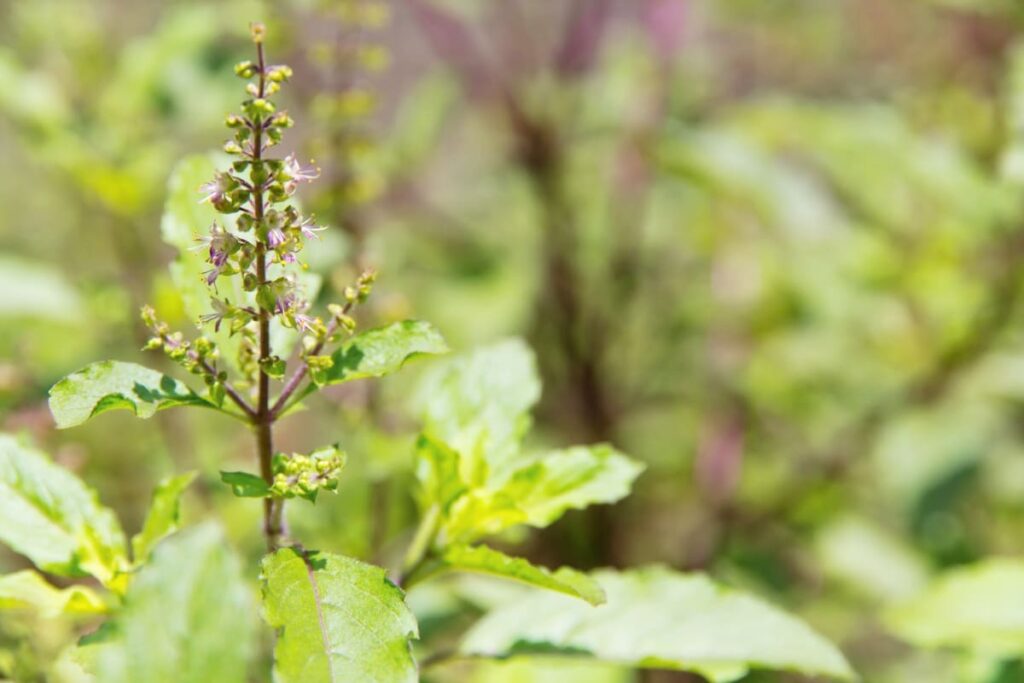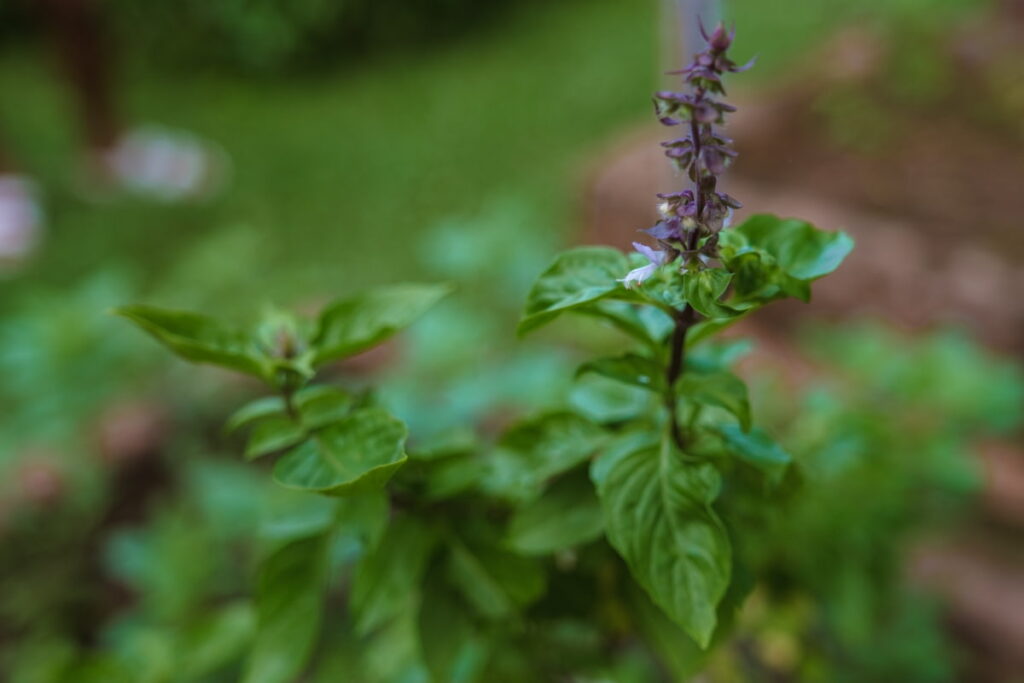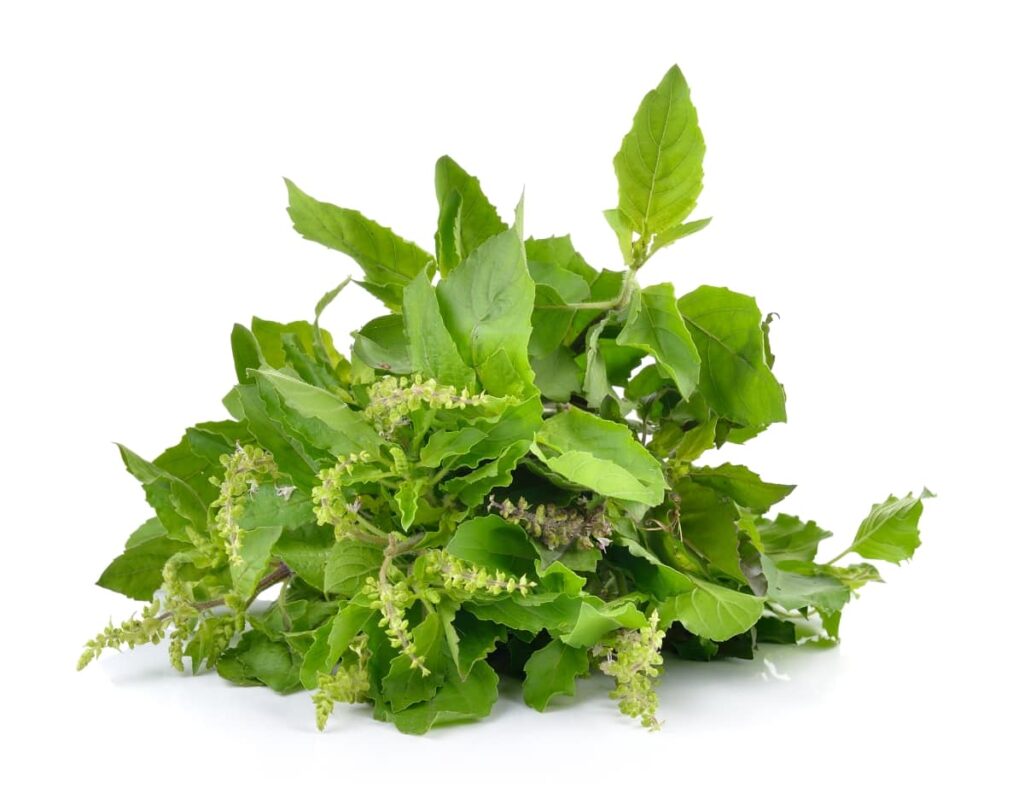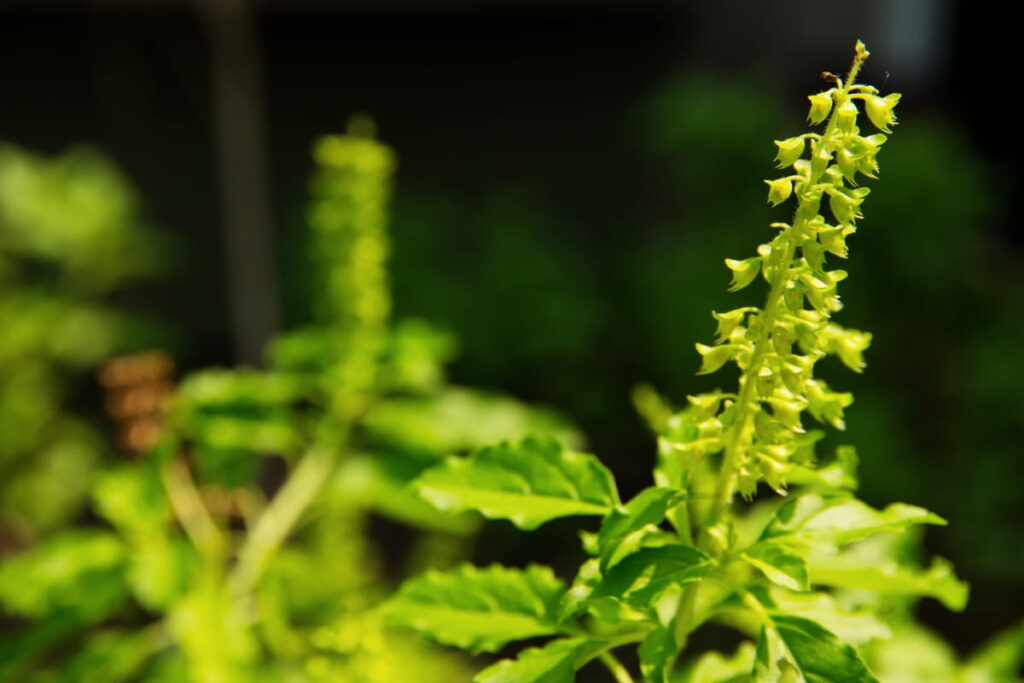The Ocimum tenuiflorum, also known as holy basil or Tulsi, is a resilient plant with many benefits but sometimes struggles due to various factors. Tulsi’s distinctive fragrance and delicate leaves make it a favorite among gardeners. Understanding why your Tulsi plant is shedding leaves is essential in finding the right solutions to help it thrive again.

Inadequate Watering
Water is essential for the growth of your beloved Tulsi plant. Inadequate watering can lead to stress and leaf shedding. The roots of the Tulsi plant need a consistent supply of water to thrive. During hot weather, you may need to water more frequently as evaporation rates increase. Make sure not to overwater the Tulsi plant, as this can lead to root rot. Set a watering schedule based on environmental conditions and adjust as necessary.
Excessive Direct Sunlight
Tulsi plants thrive in warm and sunny conditions, but too much sunlight can lead to leaf burn and stress for the plant. If you notice that your Tulsi plant is losing leaves rapidly, it might be a sign that it’s getting more sun than it can handle.
To remedy this issue, consider moving your Tulsi plant to a spot where it receives partial shade during the hottest parts of the day. This will help protect its delicate leaves from being scorched by intense sunlight. Remember that finding the right balance of light exposure is crucial for the health and well-being of your Tulsi plant.
Pest Infestation
Dealing with pest infestations can be a real headache for any plant parent, especially when it comes to your beloved Tulsi plant. These pests can wreak havoc on the health of your holy basil, causing it to shed leaves and deteriorate rapidly.
Common pests that may target your Tulsi plant include aphids, spider mites, and whiteflies. These pests feed on the plant, weakening its structure and leading to leaf loss. Additionally, regularly inspecting your Tulsi plant for pest signs and promptly addressing any issues can prevent major infestations from taking hold.
Nutrient Deficiency
When your Tulsi plant lacks vital nutrients like nitrogen, phosphorus, or potassium, its growth can be stunted, leading to leaf shedding. To address this issue, consider using organic fertilizers specifically formulated for herbs like Tulsi. You can enrich the soil by adding nutrient-rich mulch around the base of the plant. By identifying and addressing any deficiencies promptly, you can help your Tulsi plant thrive and flourish in its environment.
In case you missed it: Growing Holy Basil (Tulsi) Outdoors Information

Unsuitable Soil Type
The common reason why your Tulsi plant might be shedding leaves is due to an unsuitable soil type. The soil plays a major role in the overall health of your plant, providing essential nutrients and proper drainage. If the soil lacks sufficient aeration, it can lead to root suffocation and hinder nutrient absorption.
Tulsi plants thrive in well-draining soil that is rich in organic matter. On the other hand, if the soil is too sandy or lacks essential nutrients, your Tulsi may not be able to access the resources it needs to flourish. To prevent issues related to unsuitable soil type, consider amending the existing soil with compost to improve its texture and nutrient content.
Extreme Temperature Changes
Extreme temperature changes can be a common reason why your Tulsi plant is shedding leaves. Tulsi plants prefer stable temperatures so that sudden fluctuations can stress them out. During hot summers, make sure to provide some shade for your Tulsi plant to protect it from scorching heat. In contrast, during chilly winters, consider moving your plant indoors or providing adequate insulation to keep it warm. Monitor the weather forecast and take measures when anticipating drastic temperature variations.
In case you missed it: 10 Homemade Fertilizers for Tulsi in Pots: Natural Ways to Nourish Potted Holy Basil

Overfertilization
When plants receive an excess of nutrients, it can disrupt natural balance and lead to leaf drop. Plants like Tulsi require specific levels of nutrients to thrive. The excessive salts from fertilizer build-up in the soil can cause root burn and hinder the plant’s ability to absorb water and essential minerals.
If you notice your Tulsi plant shedding leaves excessively, take a closer look at your fertilization routine. It might be tempting to give your plant extra food in hopes of boosting growth, but moderation is important to feed your green companion. Be mindful of following the recommended guidelines for fertilizing holy basil plants to ensure their optimal health and vitality.
Poor Drainage
Poor drainage can lead to waterlogging, causing the roots of the plant to rot. When the roots are damaged, it becomes difficult for the Tulsi plant to absorb essential nutrients and water from the soil. To prevent poor drainage issues, make sure that your Tulsi plant is not sitting in a pot with no drainage holes.
If excess water has nowhere to go, it will accumulate at the bottom of the pot and suffocate the roots. Another way to improve drainage is by using a well-draining soil mix for your Tulsi plant. Mixing perlite or sand into the soil can help enhance aeration and prevent water from pooling around the roots.
Transplant Shock
Transplant shock can be a common issue when moving your Tulsi plant to a new pot or location. The sudden change in environment can stress the plant, causing it to shed leaves as it adjusts. During transplant shock, the roots struggle to establish in the new soil, leading to nutrient deficiencies and leaf loss. To help minimize this shock, ensure that you gently handle the plant during transplantation and avoid disturbing the root system too much.
In case you missed it: Maximizing Profits with a Comprehensive Tulsi Farming Business Plan

After transplanting, provide adequate water and sunlight while avoiding over-fertilization. Give your Tulsi plant some time to acclimate to its new surroundings before expecting significant growth. Remember that patience is important in dealing with transplant shock – give your plant the time and care it needs to thrive once again.
Natural Leaf Shedding Cycle
Just like any other plant, Tulsi goes through a process where older leaves are naturally yellow and drop off to make room for new growth. As the plant sheds old leaves, it reallocates nutrients to support new leaf development. Instead of worrying too much about each leaf that drops, focus on providing your Tulsi with proper care and maintenance to ensure healthy new growth.
Remember, a little shedding here and there is just nature’s way of helping your plant thrive in the long run. It is commonly found in Indian households and is easy to grow in a pot or on the ground. Remember, understanding why your Tulsi is shedding leaves is crucial in helping it thrive again.
- Irrigation and Water Management in Pineapple Farming
- Blossom to Harvest: Mastering Flowering and Pollination in Papaya Farming
- Pig Fattening Essentials: From Selection to Sale for Beginners
- Raising Wagyu Cattle: A Complete Guide for Premium Beef Production
- Soil Types and Their Water Holding Capacity
- Optimizing Irrigation Schedules for Coconut Groves for Enhanced Yield
- Espresso Your Garden: Coffee Grounds for Healthier Acid-Loving Plants
- The Best Soil Mix for Snake Plants: How to Mix Your Own Snake Plant Soil
- Green Thumb Success: Expert Tips for Cultivating Greenhouse Beans All Year Round
